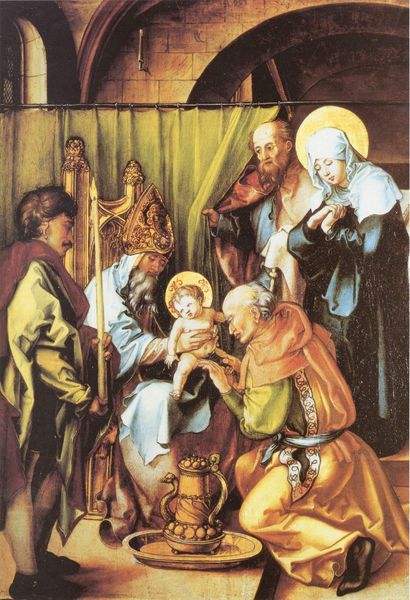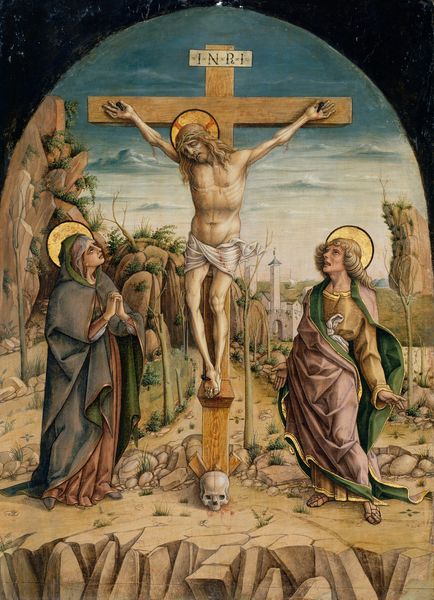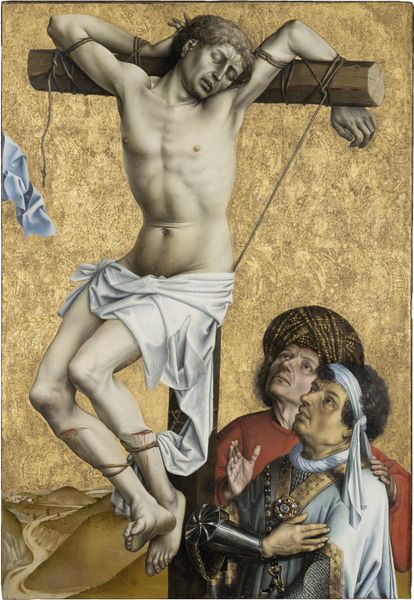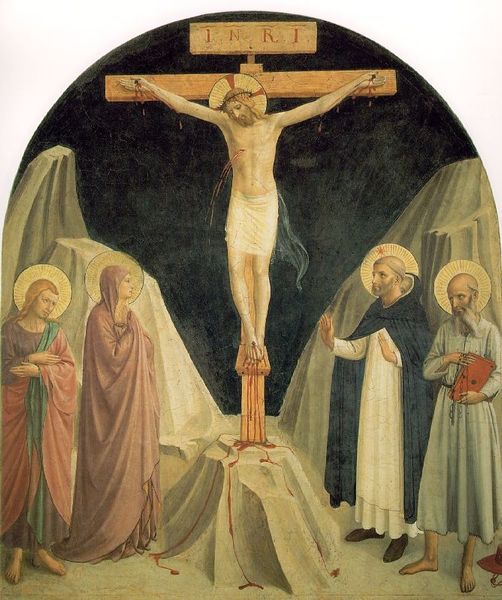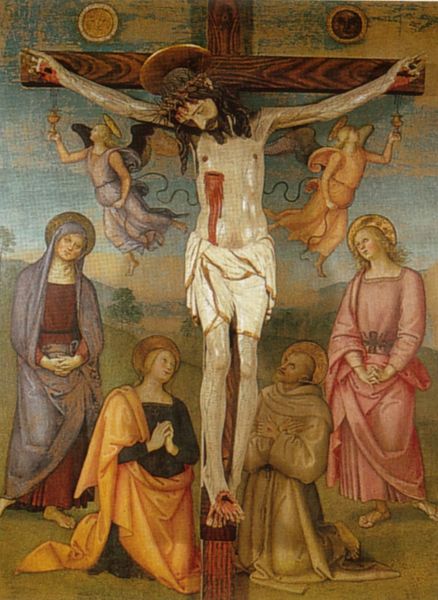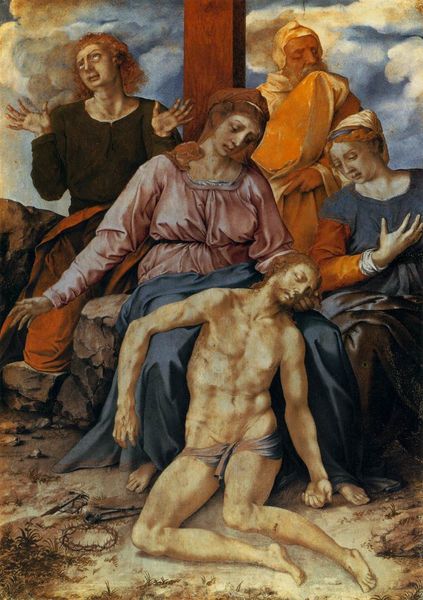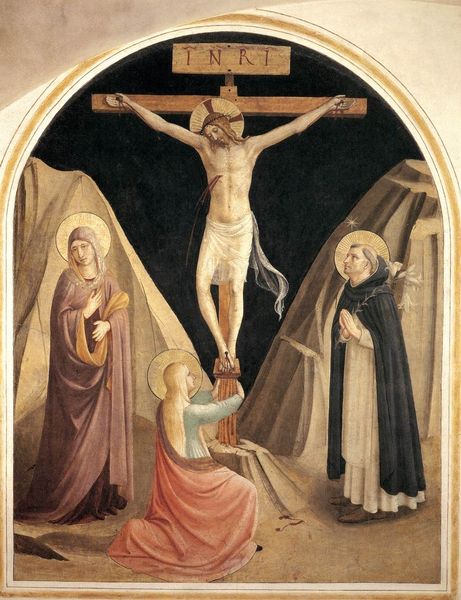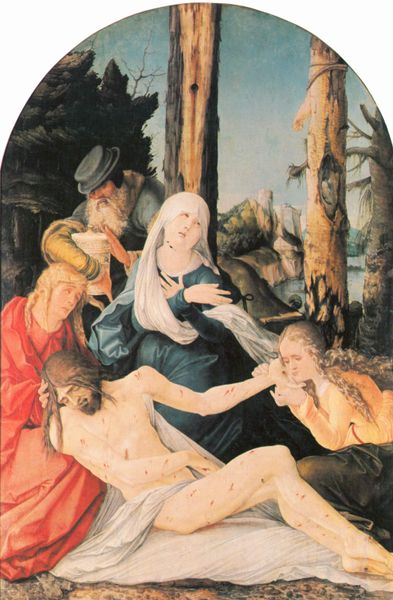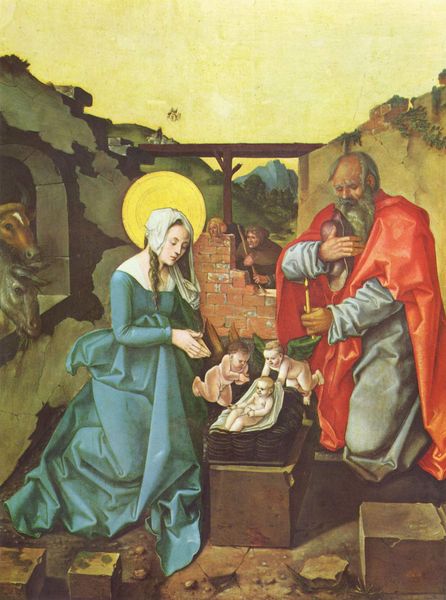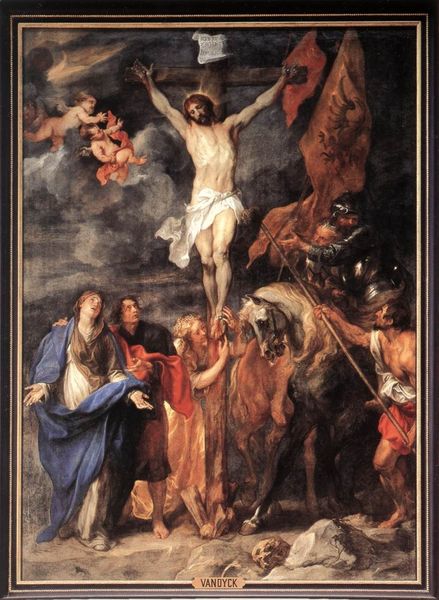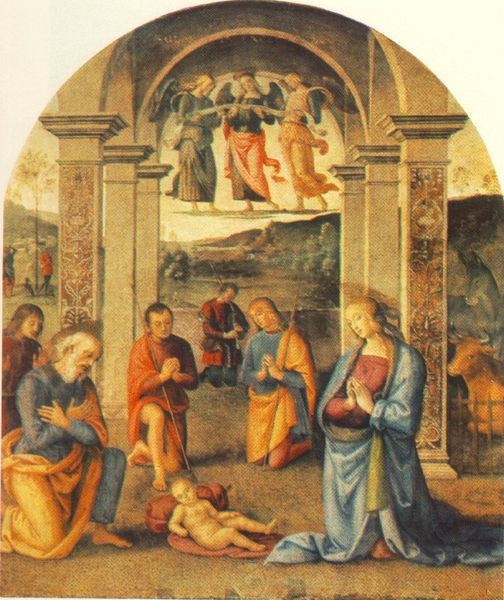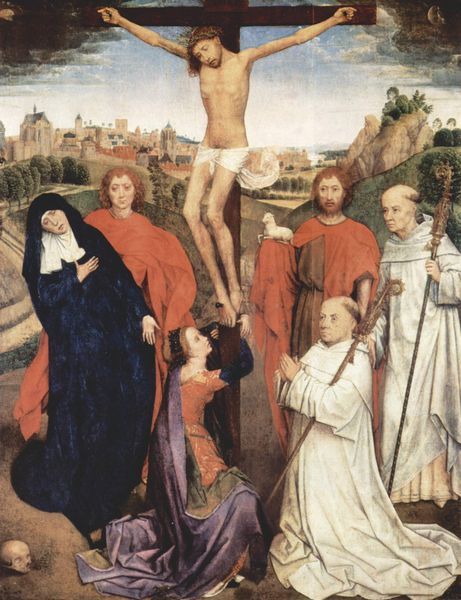
#
oil painting
#
jesus-christ
#
portrait reference
#
acrylic on canvas
#
animal portrait
#
christianity
#
mythology
#
animal drawing portrait
#
portrait drawing
#
crucifixion
#
facial portrait
#
portrait art
#
virgin-mary
#
fine art portrait
#
christ
#
digital portrait
Copyright: Public domain
Curator: Here we have Albrecht Dürer's "Christ at the Cross," painted around 1497. Editor: The immediate impression is one of sorrow, a carefully orchestrated staging of grief around a central, tragically posed figure. It’s difficult to ignore the weight of emotion concentrated here. Curator: It is, isn’t it? Considering the socio-political landscape of the time, Dürer's interpretation of the crucifixion can be seen as a commentary on suffering and sacrifice relevant far beyond religious dogma. How does this piece resonate, do you think, in our contemporary discourse on identity and marginalization? Editor: I’m immediately struck by how the symbolic elements create a complex visual language. The halo, of course, traditionally signifies divinity. But also notice the detail of the crown of thorns – its cruel mockery contrasts with the divine light, creating an almost unbearable tension. The colours too - the deep reds associated with blood, the pallid flesh tones, speak to the symbolism of death and suffering. Curator: Absolutely. Beyond its iconic imagery, I find the emotional weight of this artwork is closely connected to broader historical narratives of persecution and the misuse of power. This scene can trigger a discussion around victimhood and collective trauma. Editor: Yet the crucifixion is fundamentally about transcendence too. Consider the landscape receding in the background, almost a promise of life beyond the immediate suffering. Dürer contrasts earthly agony with spiritual hope. Curator: A key tension, for sure. Examining the female figures at the foot of the cross, can't we interpret them as representations of resilience in the face of oppression, a challenge to patriarchal structures that have historically marginalized female voices? Editor: Perhaps. And speaking iconographically, each figure embodies a specific response to grief - Mary's supplication, Mary Magdalene's devotion... They offer different faces of faith, each reflecting archetypal human emotions when faced with the inexplicable. Curator: Indeed, those varied emotions speak across centuries. It highlights shared struggles and our inherent potential for empathy and, ultimately, perhaps, change. Editor: Agreed. And the visual symbols employed here serve as timeless anchors that continually reconnect us to fundamental aspects of human experience – loss, faith, hope. Curator: This has revealed much about Durer's capacity to tap into deep, resonant themes. Editor: Indeed, it is an enduring reflection on mortality and hope, beautifully constructed through colour, light, and symbol.
Comments
No comments
Be the first to comment and join the conversation on the ultimate creative platform.
